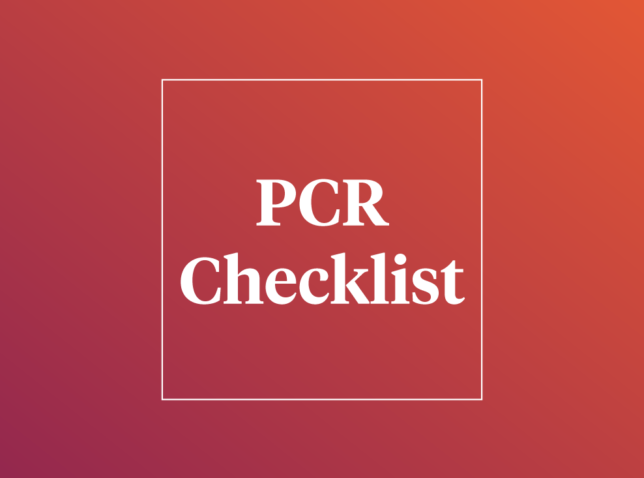The 4 Discussions You Should Have About Life Insurance
Many people don’t fully understand all that life insurance can do for them while they are alive. As a result, they miss out on the numerous benefits that make up what many have discovered to be “The Miracle of Life Insurance.” Sure, life insurance is best known for its death benefit protection, but that is often where the conversation seems to end.
It is now a good time for everyone to resume the conversation regarding life insurance by using one or more of the following discussions:
Discussion #1. What is the right amount of life insurance?
A quick online search of “How much Life Insurance do I need?” returns over 430 million results. Using the same set of client data, one website’s life insurance calculator told me my client only needs $295,000 of coverage, while another told me they need $1,500,000. No wonder people are confused.
The insurance industry has a term and a calculation called economic life value (ELV) which represents the maximum amount of life insurance the industry will offer someone. ELV is a formula: Retirement Age minus Current Age multiplied by Current Income. The “right amount” of life insurance for you and your family is somewhere between what you currently own and your ELV. To help you determine the correct amount of life insurance for you, I suggest you discuss and answer these three questions.
In the event of your premature death….
- Would your surviving spouse want to be able to pay off the mortgage?
- Would your children want to know that you have left them with enough money to pay for their college education?
- Would your family want to be able to maintain the same lifestyle that you had provided them?
Your answers to these questions can help you calculate the amount of your ELV that is right for you and your family.
Discussion #2. What is the true cost of term life insurance?
On the surface, a term life insurance policy seems less expensive than a permanent life insurance policy. However, when you’re evaluating the true cost of term life insurance, you need to consider more than just the premium being paid. If you outlive the term policy, you not only miss out on the premiums you paid, but you also lose the interest (Lost Opportunity Cost) you could have earned on those premiums. In addition to losing premiums and interest, you also lose the death benefit. With all the losses added up (lost premiums + lost interest + lost death benefit), you could potentially be losing millions of dollars.
Discussion #3. If you want to live a long life, then you want life insurance with living benefits
Many people make the mistake of thinking that life insurance is only for those they leave behind. Are you aware of all the living benefits in a permanent life insurance policy that you can enjoy during your lifetime? A few of these benefits are:
- Cash value, which grows tax-deferred
- Cash value that is available for you to use for any purpose at any age
- Potential for tax-free income in retirement
- Disability waiver of premium, so your premiums are paid for you and your policy benefits increase if you are totally disabled
- Accelerated death benefits if you are diagnosed with a chronic, terminal or long-term care illness
- Liability protection (in some states)
- Opportunity to avoid lost opportunity cost on term life insurance (see Discussion #2 above).
Discussion #4. The role of life insurance in retirement
In retirement, most people are trying to figure out how to accomplish three objectives:
- Enjoy as much retirement income as possible
- Have the peace of mind of knowing that they will never outlive their money
- Know that they will leave a legacy of money behind to a spouse, children, grandchildren, charity or some combination of these.
What most people may not be aware of is that a permanent life insurance policy can be the key to making all three objectives possible.
Why? Because in retirement, a retiree will be able to “spend” all or a portion of their permanent life insurance death benefit while they are “alive.”
Here’s how it works.
Let’s say that someone retires at 65 with a million dollars in their 401(k), and they are getting a three percent return on their money. Since they are concerned about outliving their money and about disinheriting those they leave behind, they only withdraw the interest and they never touch the $1,000,000. As a result, they must figure out how to live in retirement with only $30,000 per year (or $600,000 total over 20 years) of interest income.
On the other hand, if that same 65 year-old with a million dollars in their 401(k) had a permanent life insurance policy with a million dollar death benefit, they could spend and enjoy their 401(k) in retirement differently. They would spend and enjoy $70,000 per year (of $1,400,000 total) from their million dollar 401(k). By age 85, the million dollar 401(k) that has been generating $70,000 per year in income has been spent down to a balance of $0, which is no problem. When they die, the $0 balance in the 401(k) is replaced by the million dollars of permanent life insurance death benefit. However, if they are still alive at age 85, the permanent life insurance cash value is available to continue their retirement income each year until death.
In summary, life insurance is one of the most powerful but misunderstood and under-appreciated financial products available today. The life insurance industry and many financial professionals need to do a better job of teaching consumers how life insurance really works and how they can enjoy the many living benefits of the policy. The best place for you to start to learn the truth about life insurance, how it works and how it can benefit you is to contact your financial professional. Have a conversation with them that addresses one or more of these four life insurance discussions!
Accessing cash values may result in surrender fees and charges, may require additional premium payments to maintain coverage, and will reduce the death benefit and policy values. Loans and other policy withdrawals may be taxable under certain circumstances.
Hypothetical examples are used for illustrative purposes only and are not representative of any specific investment strategy or combination of investment strategy.
This post is for informational purposes only and should not be considered as specific financial, legal or tax advice. Depending on your individual circumstances, the strategies discussed in this presentation may not be appropriate for your situation. The information in this material is not intended as tax or legal advice. Always consult your legal or tax professionals for specific information regarding your individual situation.
3263751CC_OCT22






